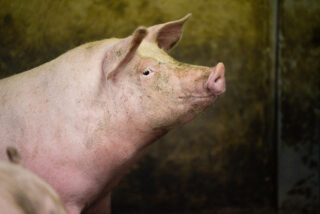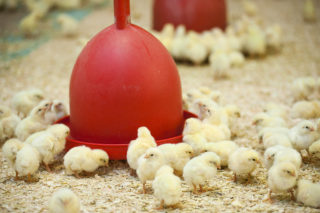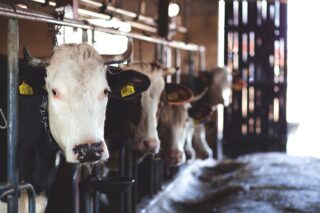Organic food is a fast growing sector mainly driven by consumer demand for healthy food. Organic animal production however is still small in comparison with conventional production as implementation is challenged by multiple restrictions. One of them is the limited list of approved functional feed ingredients in animal feed.

The principles of organic
According to the EU-definition, organic production is an overall system of farm management and food production that combines best environment practices, a high level of biodiversity, the preservation of natural resources and the application of high animal welfare standards. Translated to animal production, following principles are key:
- Organic feed: no GMO’s, no chemical pesticides and synthetic fertilizers, rotation of crops…
- Animal friendly practices: more space, comfortable and natural bedding material…
- Focus on animal health and welfare: longer production cycles, restrictions on medication…
- Focus on circular economy: local sourcing of raw materials, no manure surplus…
Small but growing market
Consumers are becoming more aware of the possible consequences of their actions on the environment, their health, animal welfare and so on. Because of this an increasing number of people choose to consume organic food. In 2017, organic retail sales in the European Union (EU) reached 34.3 billion euro accounting for 37% of the global organic food and drink market. In the last ten years, organic consumption doubled in the EU.
Despite the strong growth in organic production and consumption, organic animal production remains small. Only 3% of total animal production is organic. Graph 1 (Source: EU Agricultrual Markets Briefs, March 2019) shows the market share of organic production per animal species and their annual growth rate.

Organic dairy products have the highest market share as extensive grazing is relatively cheap and easy to convert to. Its production is mainly situated in Austria, France and Germany, followed by Denmark, the UK and The Netherlands. Regarding poultry, eggs have the highest retail market share in organic food within the EU, with high penetration in Denmark, France, Austria and Germany. The annual growth rate of organic egg production is estimated at around 13%. Organic meat production is very limited although retail sales show increasing growth rates, up to 12% in Italy and 13% in the UK.
Challenges
Organic animal production has a great ambition to provide food in a sustainable way. However, implementation of this system is not easy. In contrast to extensive grazing systems in dairy production, grain-fed systems such as pig and poultry production are difficult to convert.
The main reasons can be found in stricter rules and higher organic feed expenses. The availability of suitable raw materials is lower resulting in lower flexibility and higher prices. Optimally, raw materials are sourced locally but these feed sources are scarce and don’t always have the desired quality. As the production of organic feed has to be separated from conventional production, higher operating and investment costs also contribute to higher feed costs.
Not only a limited availability of feed materials poses a challenge but also the restriction on feed supplements (functional feed ingredients) approved in organic animal production. Systems in which the use of medication is strictly regulated but where animals can be even more exposed to pathogen challenges (e.g. free range, alternative bedding material…) ask for alternatives to support animal health and performance.
Functional feed ingredients applicable in organic feed

Balanced antioxidant status
Animals are often exposed to stress during their lifetime. Although organic animal production focuses on the health of animals, some external stressors cannot be avoided. Think about weaning stress, high production rates, high stocking density and the presence of pathogens. Stress can cause a disrupted antioxidant balance resulting in an excess of free radicals damaging the organs. The intestine is typically most sensitive resulting in a compromised gut barrier function (i.e. tight junctions) and shorter villi. A compromised gut barrier allows pathogens and toxins to enter the animal’s system increasing the risk of many other challenges. Supplementation of natural antioxidants to the feed is advised to support animals in maintaining their antioxidant status.

Protection against mycotoxins
The risk of mycotoxin presence asks for a continuous awareness of raw material quality. Minimizing the occurrence or impact of these fungal toxic metabolites is necessary to obtain the desired production levels. Despite differences in cultivation systems between organic and conventional crop production (e.g. rotation, fertilization, fungicides…), the risk on mycotoxins is comparable in both systems. Weather conditions can still be seen as one of the main factors influencing mycotoxin occurrence. In order to mitigate the risk on mycotoxins, it is advised to regularly monitor mycotoxin occurrence in raw materials and apply a mycotoxin binder in the feed to prevent toxic effects in the animal.
Vitafix Green and Vitanox by Agrimprove are highly effective functional feed ingredients allowed in organic feed and animal production. Vitafix Green offers powerful protection against mycotoxins while Vitanox results in a balanced antioxidant system. Raw materials and final feed can be analyzed quantitatively in Nuscience’s laboratory via lateral flow technology and/or LC-MS/MS on a wide range of mycotoxins.
